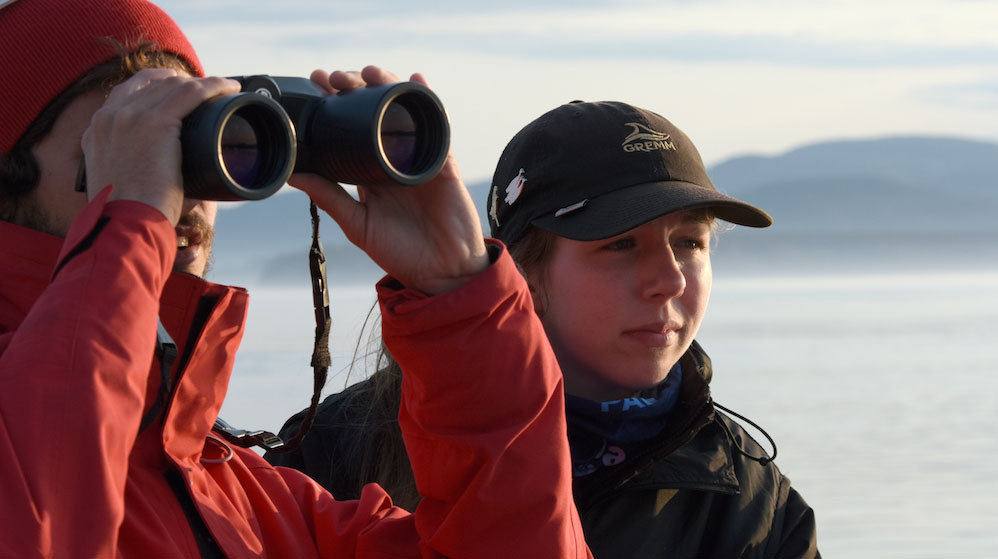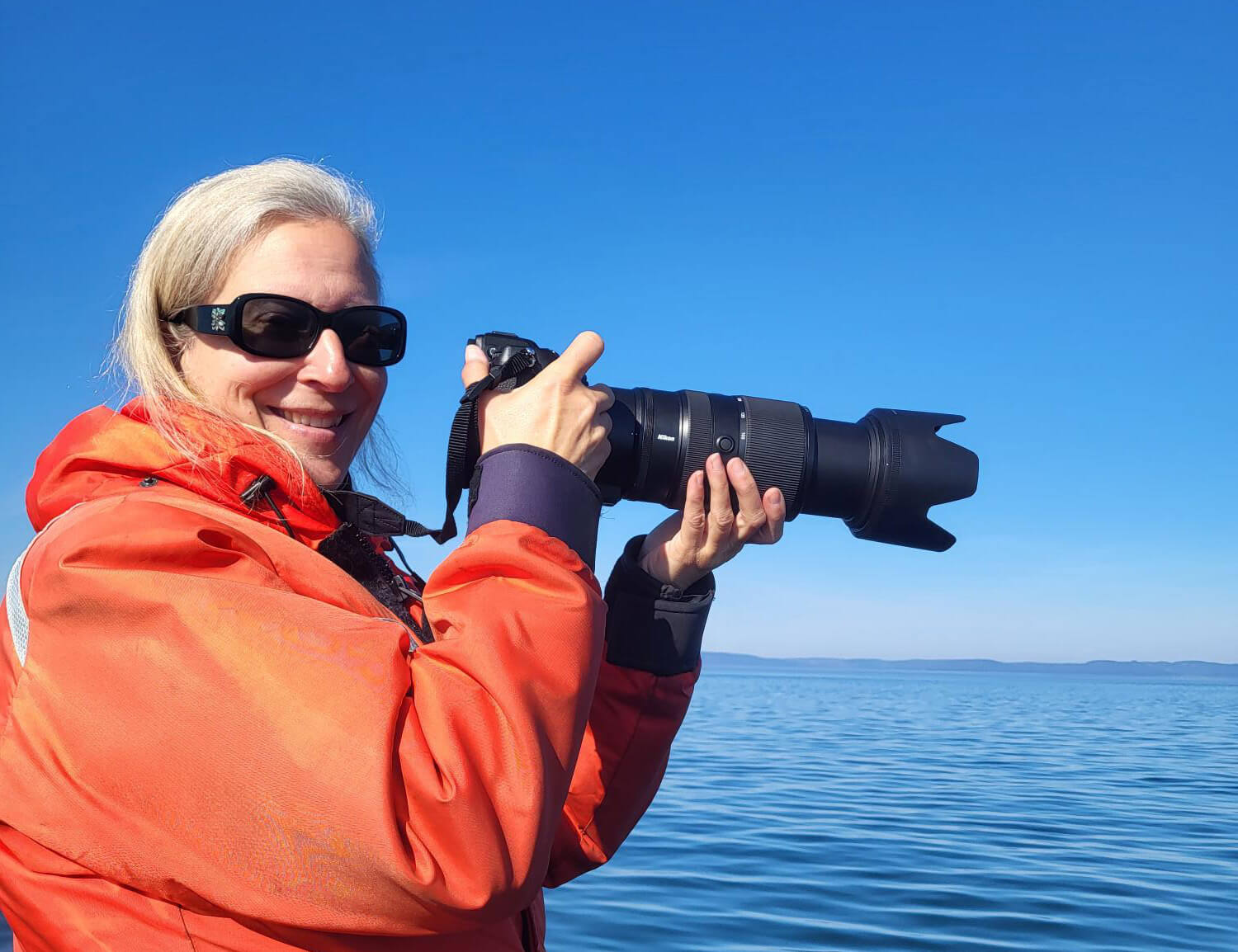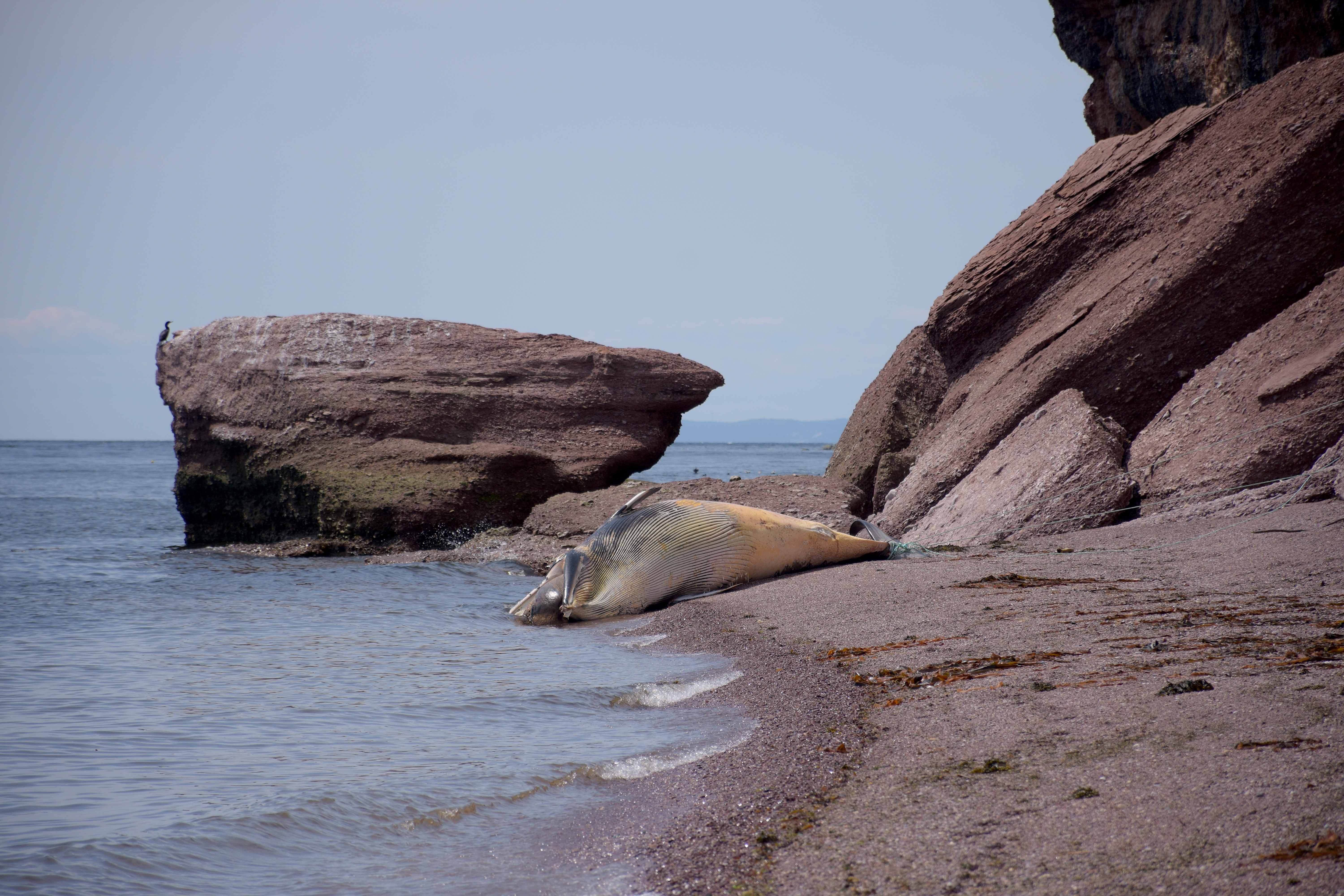Despite pleasant summertime temperatures, sustained winds of 20 to 35 knots force me to stay downwind of Cap Gaspé. I observe no fewer than eight humpback whales in the first three days, including six that were present when I left on July 1 and two new individuals for the MICS catalogue. Food seems to be abundant, and on several occasions I observe these whales defecate. The tan colour of their feces is an indicator that they are preying on fish. A reddish hue would indicate that they are eating krill. This observation makes me a little pessimistic about the prospects of seeing blue whales in the area, as they eat krill exclusively. I also observed good numbers of white-sided dolphins and harbour porpoises in Gaspé Bay.
The weather on the fourth and final day of my stay was more favourable in terms of wind and allowed me to head offshore toward American Bank. Several large spouts had been seen in this sector. I tried not to miss any. The majority of these animals were fin whales, ten or so individuals that I was lucky enough to observe defecate a number of times. This time, the colour of the feces was dark red. I also observed an impressive basking shark (which feeds on copepods) pass lazily under the boat. I then became more hopeful about encountering krill-eating blue whales.
All of a sudden, a spout a little farther upriver grabs my attention. Approaching the whale from behind, I was able to observe a smaller-than-average dorsal fin. How exciting to see that it is a beautiful blue whale, my first of the 2016 season. Its calm demeanour allowed me to take good pictures for identification purposes. Photo analysis by specialist Richard Sears confirms that this is a new individual for the catalogue, which only magnifies my satisfaction.
Mission accomplished. A special thanks to my captains, Julie and Pierre, who worked in difficult conditions.
[metaslider id=20849]
 René Roy is an amateur cetologist who is passionate about the sea and whales; he resides in Pointe-au-Père, in the Bas-Saint-Laurent region. For the past few years, he has undertaken photo-identification expeditions for the Mingan Island Cetacean Study (MICS), mainly in the Gaspé. He also volunteers for the Quebec Marine Mammal Emergency Response Network.
René Roy is an amateur cetologist who is passionate about the sea and whales; he resides in Pointe-au-Père, in the Bas-Saint-Laurent region. For the past few years, he has undertaken photo-identification expeditions for the Mingan Island Cetacean Study (MICS), mainly in the Gaspé. He also volunteers for the Quebec Marine Mammal Emergency Response Network.





